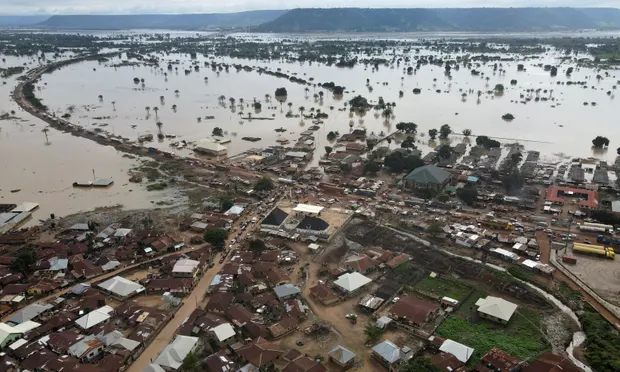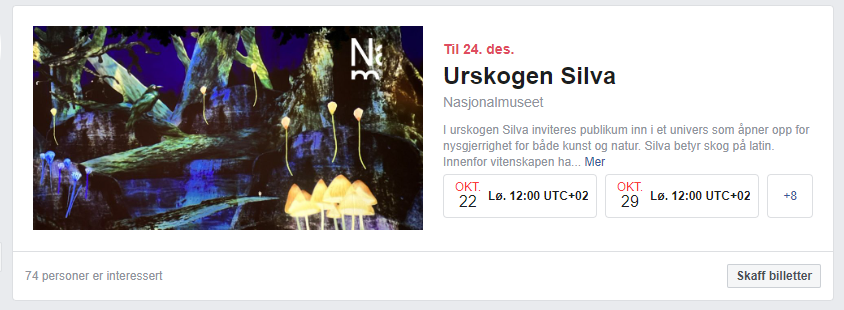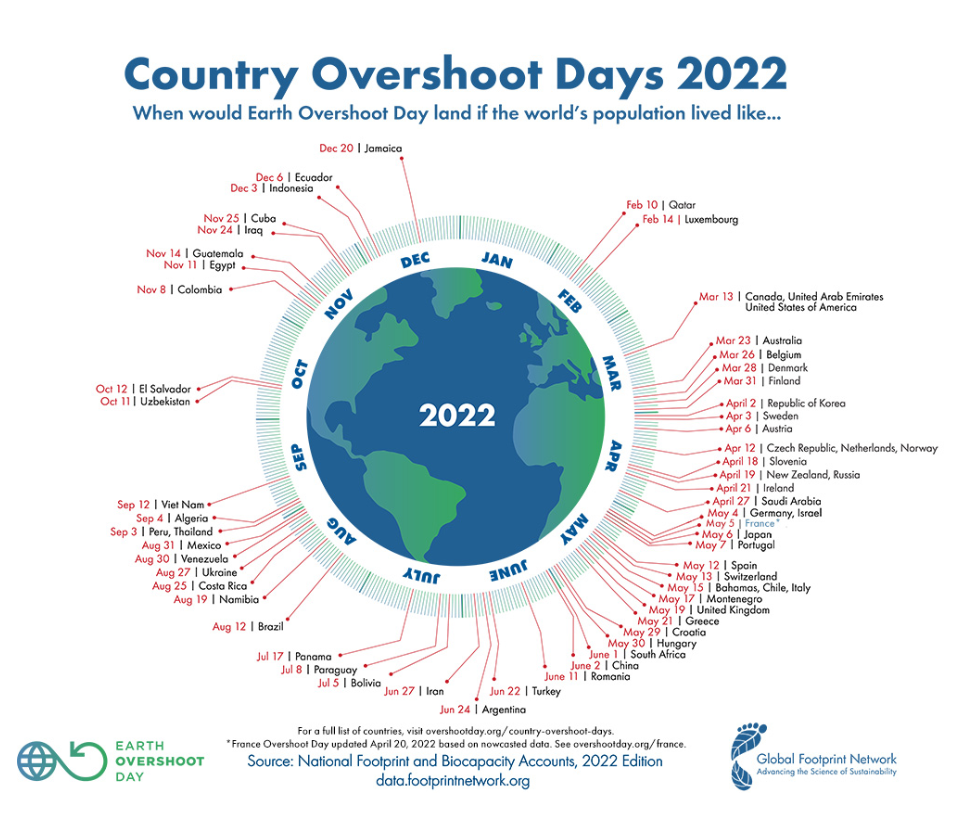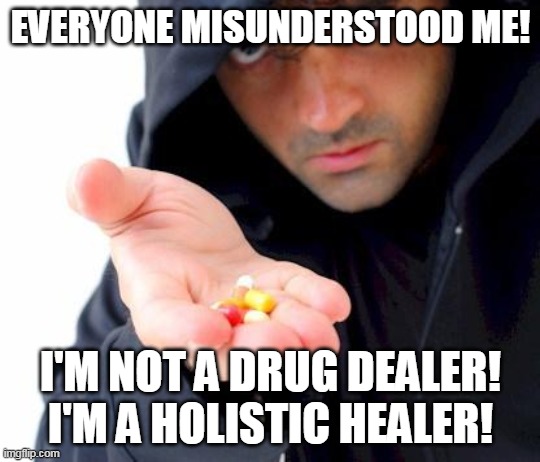The global north is the main contributor to climate change. The global south and marginalised communities are already starting to feel the effect of it. With floods in Pakistan and Nigeria as two recent examples, it’s clear that every citizen and institution in the global north has a responsibility. According to Oxfam, the wealthiest 1% are responsible for more than twice as much carbon pollution as the 3.1 billion people who make up the poorest (financial) half of humanity.
Art has a long history of patronage from wealthy individuals who have often made their money from human rights breaches, tax evasion, weapon trading, fossil fuels, opioids and more. This has disproportionally affected the global south, as exploitation often occurs in these countries. Art often excuses itself with its need to maintain private donors regardless of their ethics to maintain the institutions because it costs to maintain museums and collections.

The National Museum of Norway case study
The climate crisis is here, so museums and institutions have started to publish their climate reports. The National Museum of Norway has published a climate report. This is much welcomed because it gives an insight into the footprint of a museum. Instead of taking a holistic approach to the report, it focuses mainly on the carbon footprint of its employees and infrastructure. The vagueness of this report makes it unclear how precise it calculates this footprint. Is it also calculating travelling artists? Is it calculating the LCA of materials used in installations? Climate change is also about human rights. This is where private donors come in. Having private donors that actively work against climate change actions should be included in these reports.
The Fredriksen Deal

In 2022, the National Museum of Norway made a deal to permanently exhibit the art collection of the Frederiksen family. This will increase the value of the collection, and it’s beneficial for the family’s reputation. John Fredriksen is a tax-evading (moved his wealth to Cyprus) billionaire worth 11 billion dollars in 2013.
Fredriksen has been involved in trades with the apartheid in South Africa, trades with the priests in Iran in the ’80s and drilling business with the military junta in Burma. This drilling was directly connected to human rights breaches. He is heavily involved in fossil fuels through his ownership of several drilling companies. Frederiksen is the biggest owner of Mowi (a farmed fish company); he has supported the ruination of the sea in several countries, such as Norway and Canada. In Canada, 142975 farmed fish escaped in 2018. The farmed fish industry in Norway has 65 million fish dying each year and is also responsible for pollution through toxic chemicals. In 2019 Mowi was importing 12% of the farmed fish soy-based feed from Brazil. This caused deforestation in the rainforest and affected the people living in there. This is probably just scratching the surface.
From a gift we can afford to refuse:
Their most lucrative partnership has recently been with Putin’s authoritarian and colonial regime. John Fredriksen received Russia’s ‘Order of Friendship’ in 2015, for drilling a major oil field. The same year Crimea was invaded and annexed by Russia. Even otherwise ethically dubious ExxonMobil pulled out, in line with international sanctions, while Fredriksen’s Seadrill continued their work with the rogue state.
Meanwhile, The National Museum of Norway tries to follow the current trends in exhibition-making and events:


The problematic relationship between private capital with hardly any morals and the supposed concern for the climate and biodiversity loss is a typical neo-liberal approach to the world. Presentation is everything, while the material conditions of how the art institution is funded and operates do not matter much. There were several voices criticizing the Frederiksen partnership, but the museum did not listen.
The Climate Report

In the National Museum of Norway’s climate report, their total co2 emissions equal 1047,81 tons. They have 283 listed employees on their website. While the total emissions of the museum are hard to relate to, let’s focus on the amounts of flights in 2020. The total amount of emissions from flights was 154,73 tons. To reach the Paris agreement, each citizen can have a footprint of 2 tons per person per year. With 283 employees, the consumption per employee (just in flights) would equal 0.55 tons. This would mean each employee would have less than 1.45 tons to use for the rest of their daily life that year. For perspective, one roundtrip flight from Oslo to Berlin is around 0.37 tons.

The counterargument would be that there are 582 620 visitors per year (2018), so it needs to be divided among all the visitors too. The problem is that Norway is overshooting its climate budget on April 12th 2022. This means that you cannot divide this among all the visitors. Another counterargument would be Norway can cut emissions in places other than art. This is partially true, but Norway is still far from cutting enough yearly emissions. If the National museum cared about biodiversity loss and the global south, it would take immediate action to cut its emissions drastically. It would also halt its partnership with the Fredriksen family, which actively works against climate action and human rights in the global south.
While I would encourage all art institutions to make an honest and holistic climate report, the first thing to do would be to meet the Paris Agreement’s emissions now. No carbon credit buying allowed. Else, consider toning down the socio-political exhibitions and accept that your institution is most likely actively destroying the future of the global south daily.
So what would an honest and holistic climate report look like?
The necessary:
- Revenue per year
- Amount of employees
- Sick leave statistics
- Energy usage
- Co2 total emissions
- Flight emissions
- Fuel use
- Climate action improvement plan for the next year(s)
The holistic approach:
- Include the percentage difference between salaries from lowest paid to highest paid
- Percentage of part-time, full-time, and freelance employees and perhaps salaries
- Health insurance etc (for the countries where it applies)
- Funding and Donors. Include the most critical climate change aspects of the funding sources
- How visitors travel to the institution
- Energy sources (green etc)
- Climate aspects of the institution’s online presence
- Philanthropy
- Gender and equality facts
- Life-cycle assessment of the infrastructure and materials used in exhibitions

This list could be longer, and I think we will see a lot more climate reports as we get closer to 2030, when we need to meet the 1.5-degree target of the Paris Agreement. Transparency, ethics and climate action are critical.
Leave a Reply